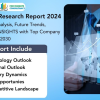Consumer debt, which includes credit cards, mortgages, student loans, and personal loans, has become a crucial factor in modern economies. While borrowing enables individuals to make significant purchases and invest in their futures, it also raises questions about the broader implications for economic growth. Understanding the relationship between consumer debt and economic growth is essential
Consumer debt, which includes credit cards, mortgages, student loans, and personal loans, has become a crucial factor in modern economies. While borrowing enables individuals to make significant purchases and invest in their futures, it also raises questions about the broader implications for economic growth. Understanding the relationship between consumer debt and economic growth is essential to formulating policies that encourage sustainable development.
Introduction to Consumer Debt and Economic Growth
Economic growth, generally measured by the increase in a country’s gross domestic product (GDP), reflects the overall health and prosperity of an economy. Consumer debt, on the other hand, is the total amount of money that individuals owe to creditors. This debt plays a significant role in shaping consumer spending patterns and, consequently, influences economic growth.
However, the nature of this relationship is complex. While consumer debt can stimulate short-term economic growth by increasing spending, it may also lead to long-term negative effects if consumers become unable to manage their debt.
Types of Consumer Debt
Consumer debt takes several forms, each of which impacts economic growth differently:
- Credit Card Debt: This is the most common form of consumer debt. Credit cards allow consumers to make purchases even when they don’t have enough cash on hand, boosting consumer spending in the short term.
- Mortgage Debt: Mortgages allow individuals to purchase homes, which is a significant financial investment. The housing market often acts as a major driver of economic growth.
- Student Loan Debt: Student loans enable individuals to invest in their education, potentially leading to higher earnings and productivity. However, excessive student loan debt can burden borrowers, reducing their ability to contribute to the economy.
- Auto Loans and Personal Loans: These forms of debt allow consumers to buy cars and fund personal expenses, further driving consumption and economic activity.
Positive Impacts of Consumer Debt on Economic Growth
1. Stimulates Consumer Spending
Consumer debt increases the purchasing power of individuals, allowing them to spend more than they currently have in their bank accounts. This increase in spending leads to higher demand for goods and services, which stimulates production, investment, and job creation. As consumer spending makes up a significant portion of GDP in most economies, increased debt can contribute directly to short-term economic growth.
2. Promotes Investment in Education and Housing
When consumers borrow money for education or housing, it results in longer-term benefits for the economy. Investing in education boosts human capital, which enhances productivity and innovation. Similarly, homeownership increases household wealth, encouraging further investment in the economy.
3. Encourages Business Growth and Job Creation
As consumers take on debt to buy products and services, businesses experience higher demand. This increased demand prompts companies to expand, invest in new technologies, and hire more employees. As businesses grow and hire, it boosts overall economic growth by raising output and employment rates.
Negative Impacts of Consumer Debt on Economic Growth
1. Increased Risk of Financial Crises
Excessive consumer debt can lead to widespread financial instability. When consumers take on more debt than they can handle, defaults and bankruptcies increase. A surge in defaults can cause financial institutions to face liquidity problems, triggering a financial crisis similar to the 2008 global recession, which was largely driven by subprime mortgage lending.
2. Lower Consumer Spending in the Long Term
While debt initially boosts spending, too much consumer debt can lead to reduced spending over time. As consumers allocate more income toward debt repayments, they have less disposable income for purchasing goods and services. This reduction in spending can slow economic growth.
3. Debt Overhang and Reduced Investment
When individuals and households are burdened by excessive debt, it discourages further investment and entrepreneurship. Debt overhang occurs when borrowers are so overwhelmed with debt that they avoid taking on new loans, even for productive purposes. This can limit economic growth, as both consumer demand and business investment decline.
4. Higher Interest Rates and Inflationary Pressure
High levels of consumer debt can lead to higher interest rates as lenders seek to compensate for the increased risk of default. As interest rates rise, borrowing becomes more expensive for both consumers and businesses. In turn, higher borrowing costs can slow economic growth and lead to inflationary pressures, which reduce purchasing power.
The Role of Government Policies in Managing Consumer Debt
Governments play a crucial role in managing consumer debt and its impact on economic growth. Policymakers can introduce regulations to limit risky lending practices and protect consumers from predatory lending. For example, tighter credit regulations can prevent households from accumulating unsustainable levels of debt, reducing the risk of financial crises.
Moreover, central banks can influence the cost of borrowing by adjusting interest rates. Lowering interest rates during economic downturns can encourage borrowing and stimulate spending, while raising rates during periods of high growth can prevent the economy from overheating and prevent asset bubbles.
Balancing Consumer Debt for Sustainable Economic Growth
A balanced approach to consumer debt is essential for sustainable economic growth. While moderate levels of debt can fuel growth, excessive debt can hinder long-term prosperity. Both consumers and policymakers must focus on ensuring that debt is managed responsibly, without encouraging unsustainable borrowing practices.
For consumers, maintaining a manageable level of debt relative to income is critical to ensuring financial stability. Similarly, governments must monitor debt levels across the economy and intervene when necessary to prevent debt-fueled bubbles from destabilizing the economy.
Analysis Table: Impacts of Consumer Debt on Economic Growth
| Aspect | Positive Impact | Negative Impact |
|---|---|---|
| Consumer Spending | Increases short-term consumer spending, boosting economic growth. | Excessive debt can reduce long-term spending as more income goes toward debt repayment. |
| Business Growth | Drives business growth and job creation due to increased demand. | High consumer debt can reduce business investment as debt burdens increase. |
| Education and Housing | Investment in education increases human capital; homeownership fosters wealth accumulation. | Student loan and mortgage crises can destabilize the economy, as seen in the 2008 financial crisis. |
| Financial Stability | Can be managed with proper regulation and responsible lending. | Excessive consumer debt can lead to financial crises and economic downturns. |
| Interest Rates | Promotes economic growth with moderate borrowing and low interest rates. | High levels of debt can lead to inflation and higher interest rates, which slow down economic growth. |
| Government Policy | Stimulates economic growth by managing borrowing costs and limiting risky lending. | Poor policy decisions can contribute to economic instability and rising debt burdens for households. |
Comparative Table: Short-Term vs. Long-Term Impacts of Consumer Debt
| Time Frame | Positive Impact on Economic Growth | Negative Impact on Economic Growth |
|---|---|---|
| Short-Term | – Increased consumer spending boosts demand for goods and services. – Stimulates business growth and job creation. |
– Rapid accumulation of debt can lead to defaults and financial instability. |
| Long-Term | – Investment in education and housing leads to higher productivity and wealth. | – Debt overhang reduces consumer spending and business investment, slowing growth. – Higher interest rates due to excessive borrowing slow future growth. |
Conclusion
The relationship between consumer debt and economic growth is intricate. While moderate levels of can drive short-term economic growth by boosting spending and investment, excessive debt can lead to long-term negative consequences, such as reduced spending power, increased interest rates, and financial instability. A balanced approach that encourages responsible borrowing and proper regulation is essential to ensuring sustainable economic growth.
Governments, financial institutions, and consumers must work together to create an environment that supports healthy borrowing practices while mitigating the risks associated with excessive debt. By doing so, economies can benefit from the positive impacts of without facing the dangers of unsustainable debt levels.






















